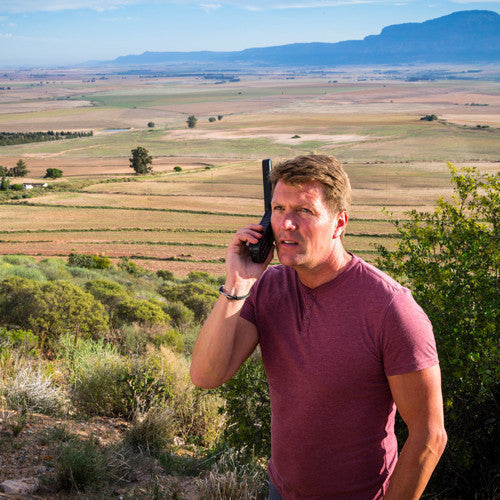Myths and Truths: What You Really Need to Know about the Inca Trail and Machu Picchu
The Inca Trail and Machu Picchu stand as iconic symbols of ancient civilization, nestled amidst the breathtaking landscapes of Peru’s Andean mountains. The Inca Trail, a 63-kilometer trek, winds its way through rugged terrain, offering hikers a glimpse into the past as they journey towards the fabled citadel of Machu Picchu.
This ancient pilgrimage route is steeped in history, dotted with archaeological wonders and sacred sites that bear witness to the ingenuity and resilience of the Inca people.

Machu Picchu, the crown jewel of Inca civilization, continues to captivate the imagination of travelers worldwide. Named a UNESCO World Heritage Site, this enigmatic citadel is renowned for its stunning architecture and panoramic views. Yet, amidst the allure of these ancient wonders lies a tapestry of myths and misconceptions.
Understanding the truth behind these myths is essential for truly appreciating the historical and cultural significance of the Inca Trail and Machu Picchu. By unraveling the mysteries of the past, travelers can forge a deeper connection to these sacred sites and gain a greater appreciation for the legacy of the Inca civilization.
Unraveling the Mysteries of Inca Ruins in Peru
The Inca Ruins in Peru stand as a testament to the ingenuity and sophistication of the ancient Inca civilization. These archaeological wonders, scattered across the Peruvian landscape, hold within their crumbling walls the secrets of a bygone era.
From the majestic terraces of Machu Picchu to the enigmatic ruins of Sayacmarca, each site tells a story of innovation and cultural richness.
Exploring the Inca Ruins in Peru is not just a journey through time; it’s an immersion into the heart of a civilization that thrived amidst the rugged Andean terrain. The allure of these ancient civilizations lies in their ability to captivate the imagination and inspire wonder.

Walking in the footsteps of the Inca, visitors are transported to a world where stone temples and ceremonial plazas were the beating heart of society.
For adventurers and history enthusiasts alike, the chance to unravel the mysteries of the Inca Ruins in Peru is an opportunity to connect with the past in a profound and meaningful way. It’s a journey of discovery that transcends mere sightseeing, offering a glimpse into the soul of a culture that continues to fascinate and inspire to this day.
The Enigmatic Inca Trail
Hiking the Inca Trail is an experience like no other, captivating adventurers with its unparalleled allure and mystique. Unlike any ordinary trek, the Inca Trail weaves through breathtaking landscapes of the Andean mountains, offering a journey that transcends mere physical exertion. Each step along the ancient stone paths is imbued with the spirit of the past, as hikers follow in the footsteps of the ancient Incas.
What sets the Inca Trail apart from other treks is its rich historical significance and cultural immersion. As hikers traverse the rugged terrain, they encounter a series of awe-inspiring archaeological sites, each steeped in centuries of history and mystery.

From the terraced fields of Patallacta/Llactapata to the majestic ruins of Wiñay Wayna, the trail is a living testament to the ingenuity and resilience of the Inca civilization.
The journey begins at Piskakucho – KM 82, where hikers are greeted by the majestic Andean peaks and the warm smiles of local inhabitants. From there, the trail winds its way through lush valleys, towering mountain passes, and dense cloud forests, culminating in the awe-inspiring arrival at Machu Picchu.
It’s not just a trek; it’s a transformative experience that connects travelers to the ancient past and the natural beauty of Peru.
Exploring the Inca Ruins Along the Trail
Embarking on the Inca Trail is a journey through time, punctuated by remarkable Inca Ruins in Peru that dot the path. Each archaeological site holds a piece of the region’s rich history and cultural heritage.
- Patallacta/Llactapata: Situated at 2,840 meters above sea level, Patallacta served as an agricultural and administrative hub for Machu Picchu. Its intricate terraces exemplify Inca ingenuity in agricultural practices, showcasing the empire’s mastery of land cultivation.
- Runkurakay: Perched at 3,760 meters above sea level, Runkurakay boasts a semi-circular construction that stands amidst lush vegetation. Believed to be a resting place or control post, its strategic location offers panoramic views of the surrounding landscapes, including the iconic Dead Woman’s Pass.
- Sayacmarca: Nestled atop a mountain at 3,600 meters above sea level, Sayacmarca offers breathtaking vistas of the Aobamba valley and Pumasillo mountain. Its maze-like structure and cliff-edge positioning suggest ceremonial and astrological significance, showcasing the Inca’s reverence for the cosmos.
-
Phuyupatamarca:
Known as the “place of the clouds,” Phuyupatamarca stands at 3,670 meters above sea level, offering a glimpse into the Inca’s advanced hydraulic engineering. With terraces, enclosures, and ritual baths, it showcases the empire’s harmonious relationship with nature.
- Intipata: Thought to be an agricultural center, Intipata’s terraces and canal systems demonstrate the Inca’s mastery of farming techniques. Its proximity to Machu Picchu hints at its role in supplying the citadel with food and resources.
- Wiñay Wayna: Situated at 3,800 meters above sea level, Wiñay Wayna is renowned for its terraces, enclosures, and cascading waterfall. Serving as the final campsite before Machu Picchu, it offers a glimpse into the Inca’s agricultural and administrative practices.
- Inti Punku: Translating to “Sun Gate,” Inti Punku marks the entry point to Machu Picchu. As a ceremonial checkpoint, it symbolizes the Inca’s reverence for the sun god, Inti, and offers unparalleled views of the citadel.
These Inca Ruins in Peru along the Inca Trail are not merely relics of the past; they are living testaments to the ingenuity and resilience of the Inca civilization.
Debunking Myths Surrounding the Inca Trail
Misconceptions about the Inca ruins in Peru often abound, perpetuating myths that cloud the true understanding of these ancient sites. One common misconception is that Machu Picchu was a hidden city, lost to the world until its rediscovery in 1911.
Local farmers knew of Machu Picchu’s existence long before Hiram Bingham discovered it in reality. Another myth suggests that the Inca Trail was solely a trade route, disregarding its significance as a sacred pilgrimage path leading to Machu Picchu.
In debunking these myths, it’s crucial to provide factual information. Machu Picchu served as a royal estate and religious sanctuary, its purpose likely tied to the Inca emperor Pachacuti. Additionally, the Inca Trail was an integral part of the Inca pilgrimage network, with each stop along the trail holding spiritual significance.
By dispelling these myths and providing accurate information, visitors gain a deeper appreciation for the historical and cultural significance of the Inca ruins in Peru.
The Truth Behind Machu Picchu
Machu Picchu, nestled amidst the mist-shrouded peaks of the Andes, is a place of wonder and intrigue. Designated as a UNESCO World Heritage Site in 1983, its cultural significance extends far beyond its breathtaking beauty.
Yet, despite centuries of exploration and study, the purpose of Machu Picchu remains a subject of debate among scholars and archaeologists.
Some argue that it served as a royal retreat for Inca emperors, while others believe it was a religious sanctuary dedicated to the worship of Inca deities.
Ongoing research continues to uncover new insights into Machu Picchu’s history and purpose, shedding light on its role in the Inca civilization.

What is undeniable is Machu Picchu’s architectural brilliance and its seamless integration with the surrounding landscape. Its terraced fields, stone temples, and intricate water systems speak to the ingenuity of the Inca people and their reverence for nature.
Visitors wander through the ancient streets, marveling at the imposing structures and being drawn into a world shrouded in mystery and intrigue.
And while the truth behind Machu Picchu may remain elusive, its allure remains as potent as ever, beckoning adventurers from around the globe to unlock its secrets.
The Alpaca Difference
At Alpaca Expeditions, we pride ourselves on our unwavering commitment to responsible tourism. As a 100% Peruvian, indigenous-owned company, we understand the importance of preserving our cultural heritage and natural environment.
Our team dedicates ourselves to delivering unparalleled service to our customers and giving back to the communities where we operate. By choosing us for your Inca Trail experience, you’re not just embarking on a journey of a lifetime – you’re supporting sustainable tourism practices that benefit both local residents and the environment.
Our indigenous ownership ensures that our tours are respectful of the land and its people, while our dedication to customer satisfaction ensures that every aspect of your journey is carefully curated for an unforgettable experience. Join us and discover the difference that responsible, sustainable tourism can make.
Conclusion
In conclusion, delving into the truth behind the Inca Trail and Machu Picchu is essential for truly appreciating the richness of this historical and cultural treasure. By understanding the real significance of these sites, travelers can embark on a journey that transcends mere adventure and becomes a profound exploration of human ingenuity and spirit.
As you prepare to embark on this unforgettable journey, choosing a reputable tour operator like Alpaca Expeditions ensures not only a memorable experience but also a responsible and sustainable approach to tourism.
With Alpaca Expeditions, you can traverse the ancient paths with confidence, knowing that your adventure supports the local community and preserves the integrity of these sacred sites for generations to come. Embrace the wonders of the Inca Trail and Machu Picchu with an open heart and a spirit of curiosity, and let the truths you uncover along the way enrich your journey in ways beyond imagination.
Alpaca Expeditions Recognitions
ISO (International Organization for Standardization)
In the pursuit to stand out from the rest, Alpaca Expeditions has obtained four ISOs plus our carbon footprint certificate to date. These achievements result from our efforts to implement the internationally-recognized integrated management system. They also represent our commitment to all of our clients and staff of operating sustainability and responsibility in every way possible.



































 Porters will carry up to 7 kg of your personal items, which must include your sleeping bag and air mat (if you bring or rent one). From us, these two items weigh a combined total of 3.5 kg.
Porters will carry up to 7 kg of your personal items, which must include your sleeping bag and air mat (if you bring or rent one). From us, these two items weigh a combined total of 3.5 kg.

